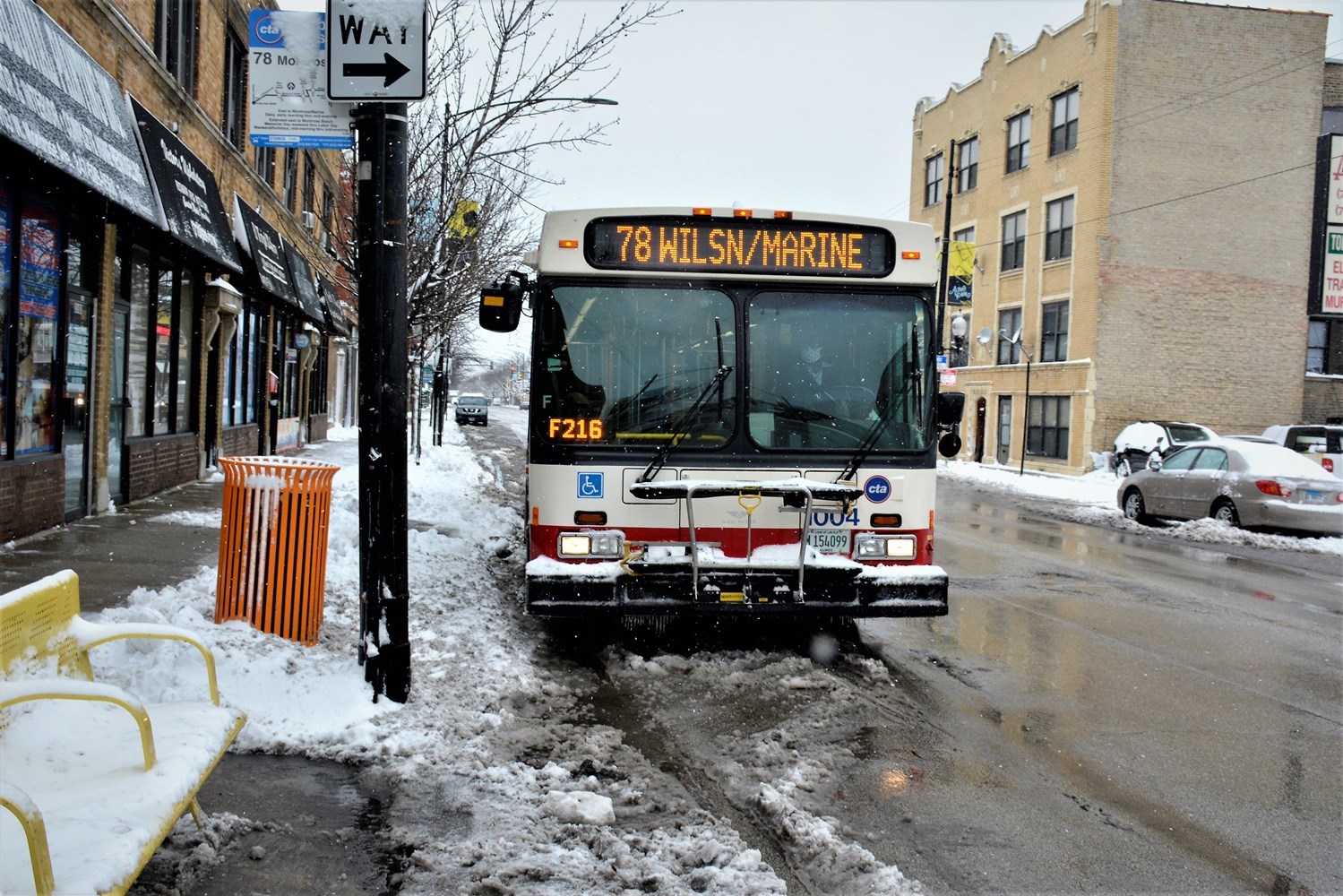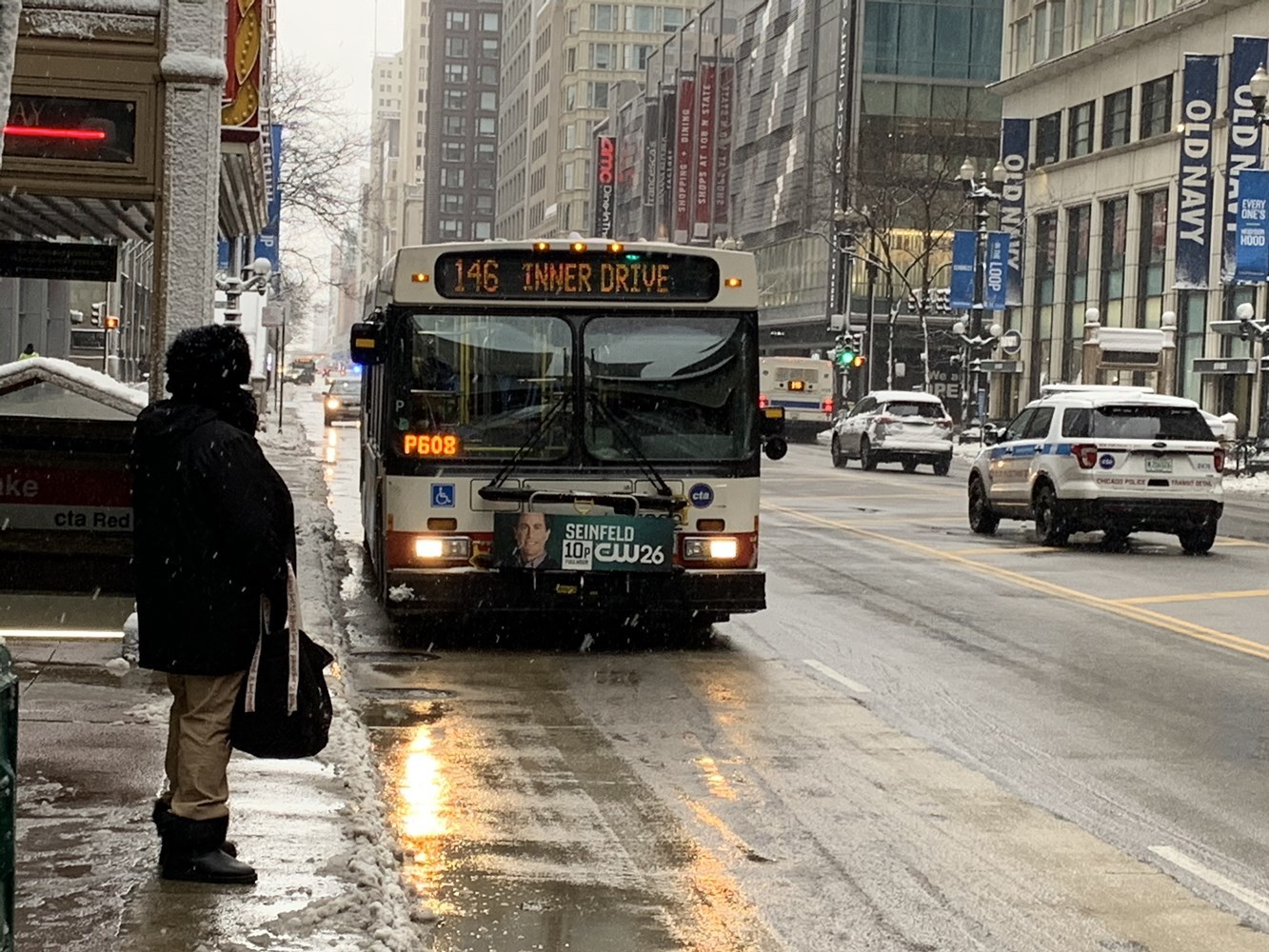We take seriously the responsibility of getting you to your destinations safely, especially during the winter. Unfortunately, one of the biggest challenges during the winter is navigating areas that are not cleared of snow and ice.
CTA is an independent transit agency and our bus and rail system serves many municipalities, including the City of Chicago and 30 neighboring communities, which sometimes causes confusion over who’s responsible for clearing snow/ice.
Put simply: We're responsible for snow removal on our property, while most bus stops and areas adjacent/leading up to CTA property are the responsibility of others as described below.
We've put together this page to help provide information and context on what we do to clear snow/ice from CTA properties, and what you can do about non-CTA areas that need clearing, including who to contact for further assistance:
Bus stops and shelters not on CTA property

There are nearly 11,000 bus stops served by our buses, the vast majority of which are located along public ways—though we may place a sign on a pole and stop at that sign, the area around the bus stop is typically properly of the local municipality (such as the City of Chicago or Evanston) and not managed by the CTA.
In Chicago, here's some guidance as to who is responsible for clearing bus stops of snow:
- City of Chicago bus shelters: Most shelters at CTA bus stops in the City of Chicago are street furniture installed and maintained by a vendor of the City of Chicago—these shelters are the common type with glass walls, a map, a City seal on the outside and, typically, a large ad on one wall.
We work closely with the Chicago Department of Transportation (CDOT) to ensure bus shelters are shoveled as quickly as possible by their vendor for the convenience and comfort of our customers. Issues with snow removal in these shelters should be reported to the City of Chicago by calling 311, visiting 311.Chicago.gov, or by using the CHI 311 app.
- Stops without shelters: Unless it is part of a CTA station, terminal or other CTA-run transit center, clearing snow/ice from a bus stop located along the public way (public sidewalk) is typically the responsibility of the adjacent property owner(s) and/or local municipality.
For example, in Chicago, property owners must maintain the sidewalks along their property, while the City of Chicago plows the streets up. (For who is responsible in other municipalities we serve, please contact your local city/town/village for information.)
For Chicago, please see the following for more info on what's required by property owners on sidewalks:
- City of Chicago Sidewalk Snow Removal webpage
- 2020 Chicago sidewalk snow removal brochure (.pdf)
Reporting issues with bus stops/shelters
In Chicago, you can call 311 or submit a service request online to report City bus shelters that need attention (including snow removal, damage or any other issues). You can also call 311 or submit a service request online to report sidewalks not cleared by their adjacent property owners.
For bus stops on public streets located outside the City of Chicago, please visit the local municipal website for further guidance on snow removal requirements and how to report areas needing attention.
CTA-owned rail stations, bus terminals/turnarounds and transit centers

Ahead of a major winter storm, CTA crews are deployed across the bus and rail system – and if necessary, are scheduled in shifts around the clock – to help prepare for and address any accumulated snow or ice at our rail stations and transit centers.
As part of these efforts, our crews are responsible for salting/sanding and clearing snow from all CTA bus turnarounds (100+ locations), bus terminals or intermodal transit centers (95th/Dan Ryan, Jefferson Park, Navy Pier, etc.) and all entrances to the 145 rail stations and their outdoor stairways. Crews also sand outdoor rail platforms for added traction*.
Please note that the clearing of expressway bridge sidewalks that lead up CTA rail stations where the tracks are in the middle of an expressway (for example, many stations on the Blue Line and most of the Dan Ryan branch of the Red Line) is done by CTA crews, while sidewalks opposite of the station/bus stops are cleared by CDOT crews. When we identify or are made aware of any hazardous sidewalk conditions, we work closely with our municipal partners to ensure safe access to our stations.
To report a CTA-managed location in need of snow removal, you can use any of the following options:
- CTA ChatBot (New!): During the winter months, a new prompt is available via the CTA ChatBot (on transitchicago.com, bottom right corner) to report snow/ice conditions at only CTA-managed properties.
- Calling CTA Customer Service at 888-YOUR-CTA
- Email CTA Customer Service by clicking here.
*Why sand in some locations instead of salt? Salt tends not to be used on platforms to avoid damage to platform surfacing—especially where platforms are made of wooden planks—and salt and many other common lower-temperature snow melting substances can create conductivity issues when they run off to track level where there are electrified rails to power trains, presenting railroads like ours additional challenges and requiring special considerations on what to use and where.